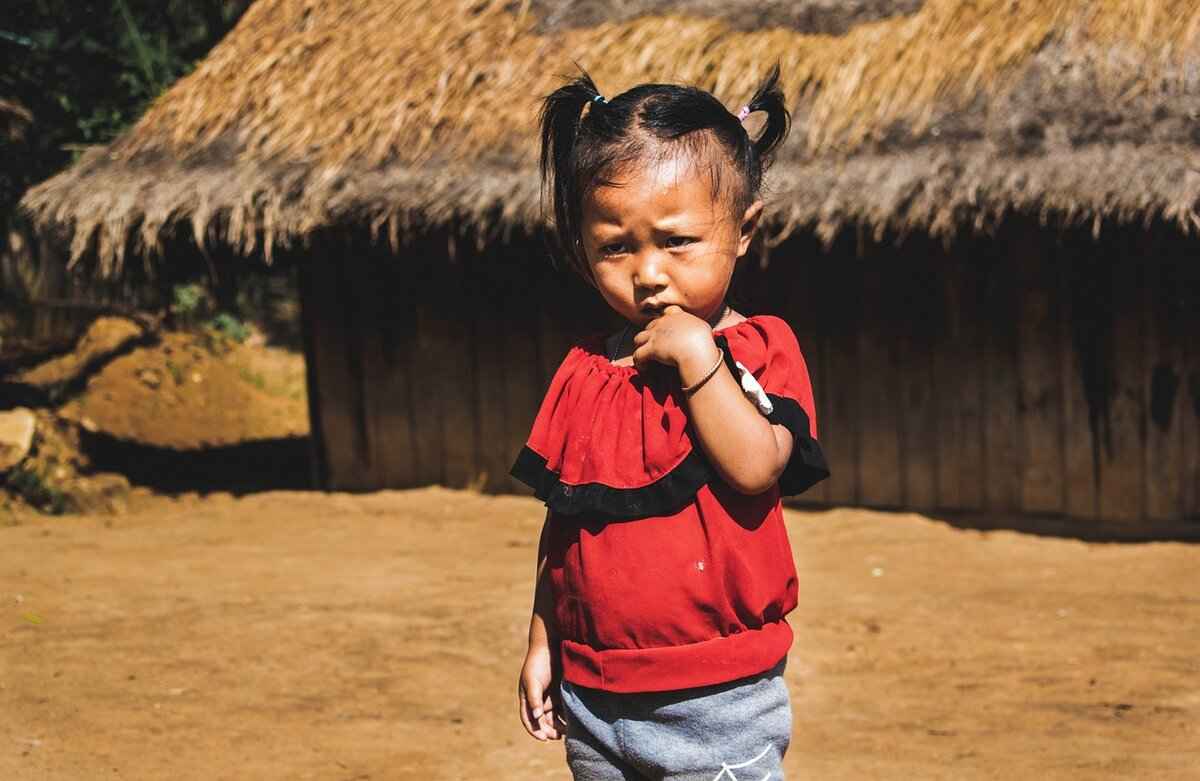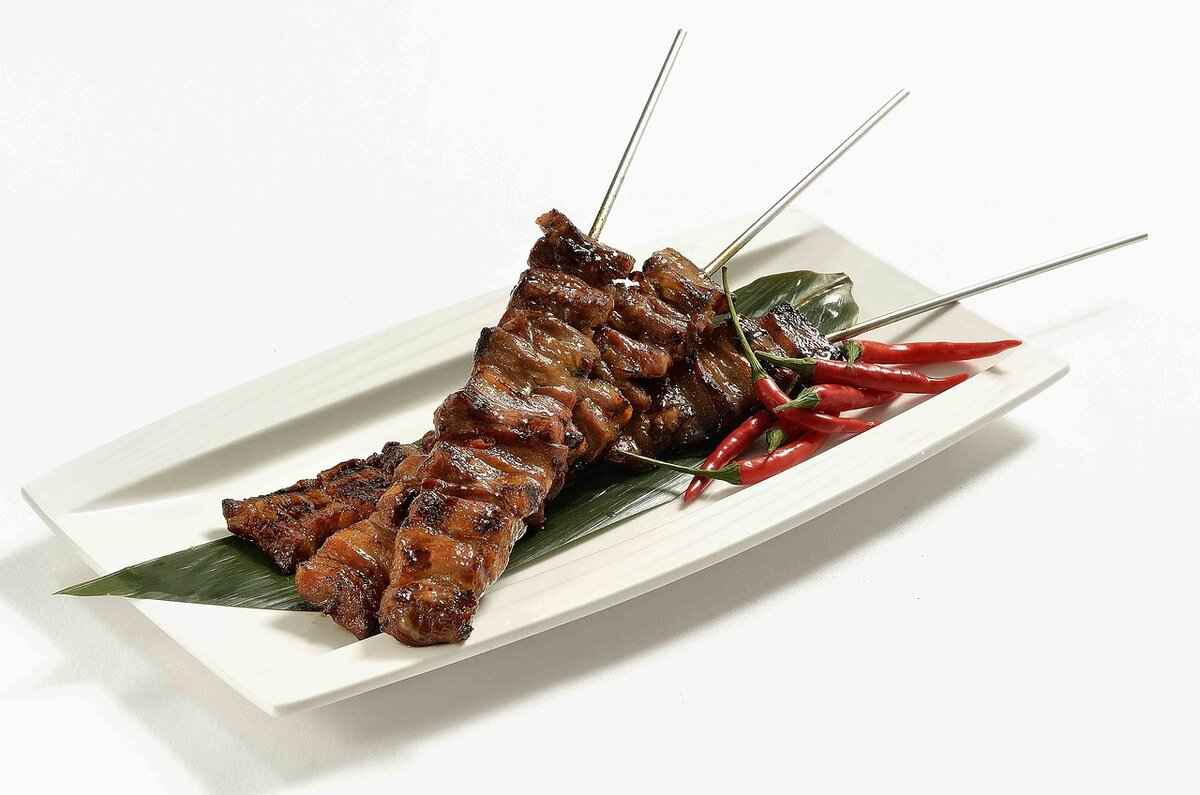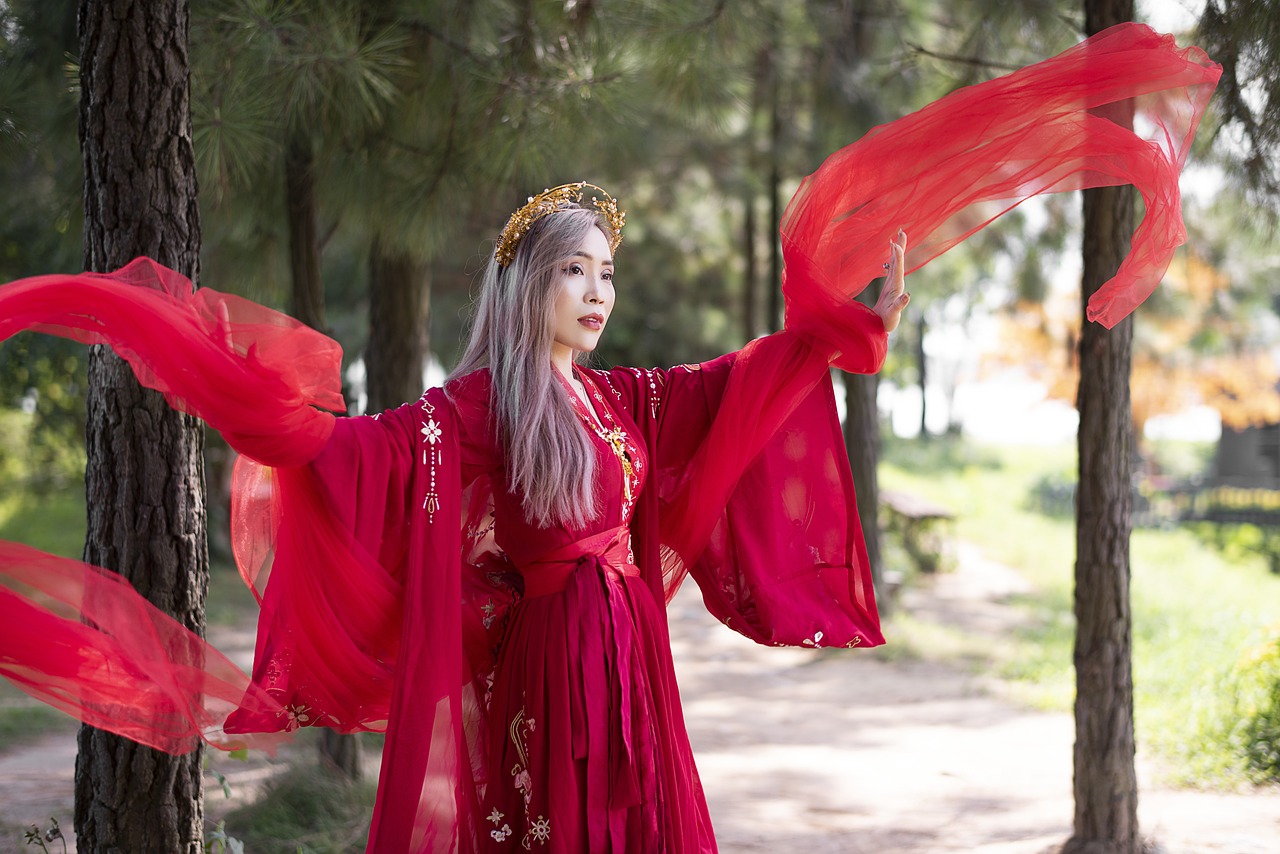This article delves into the rich and diverse culinary traditions of Asian tribal festivals, showcasing unique dishes, their cultural significance, and the fascinating stories that underpin these remote culinary practices. Each festival is a vibrant tapestry of flavors, ingredients, and rituals that reflect the identity of the tribes.
Asian tribal festival foods are characterized by their use of local ingredients, traditional cooking methods, and cultural symbolism. These foods often serve as a medium for storytelling, where each dish encapsulates the tribe’s heritage and beliefs. The preparation and sharing of these meals foster community bonds and strengthen cultural identity.
The ingredients in Asian tribal cooking often include indigenous plants, local meats, and traditional spices. For instance, many tribes utilize wild herbs and roots that are native to their regions, enhancing the distinct flavors and nutritional value of festival dishes. This reliance on local produce not only supports sustainability but also preserves the ecosystem.
Seasonal changes play a crucial role in determining the availability of ingredients. Festivals often coincide with harvest times, celebrating the bounty of the land. This connection to nature’s cycles ensures that the dishes prepared during these festivals reflect the rhythms of the environment, reinforcing the tribe’s relationship with their surroundings.
Among Asian tribal communities, popular cooking techniques include steaming, grilling, and fermentation. These methods not only enhance flavors but also contribute to food preservation, allowing communities to store and utilize their harvests throughout the year.
Local customs and traditions significantly influence ingredient choices. Certain foods are prepared for specific festivals to honor deities, ancestors, or seasonal changes, reflecting the cultural beliefs of the tribe. For example, specific meats may be reserved for religious ceremonies, showcasing the community’s values and spirituality.
Herbs and spices are essential in Asian tribal cuisine, adding depth and complexity to flavors while also offering medicinal benefits. The tribes possess extensive knowledge of local flora, which is often passed down through generations, highlighting the importance of these ingredients in both culinary and health practices.
Signature dishes from various Asian tribes reveal the diversity of flavors and cooking styles. For instance, the Hmong tribe is known for its spicy stews, while the Garo tribe specializes in fermented rice dishes. Each dish represents the unique cultural heritage and culinary practices of the community, often accompanied by stories that enrich their significance.
Rice serves as a staple in many Asian tribal diets and is often featured in festival foods. It symbolizes prosperity and abundance, with various preparations reflecting local traditions and preferences. For example, sticky rice is commonly served during harvest festivals, embodying gratitude for the land’s bounty.
Certain festivals are celebrated with unique dishes that hold cultural significance. For example, during the Moon Festival, families prepare mooncakes to symbolize unity and togetherness. These dishes not only satisfy hunger but also convey deep cultural messages, reinforcing community ties and shared values.
Modern influences, including globalization and urbanization, are reshaping traditional festival foods. This blending of old and new culinary practices raises concerns about cultural preservation. Many communities are striving to maintain their culinary heritage while adapting to contemporary tastes and lifestyles.
Maintaining culinary traditions poses challenges, such as the loss of traditional knowledge and changing lifestyles. The impact of modern agricultural practices on ingredient availability and quality further complicates the preservation of these rich culinary legacies.
Younger generations are increasingly engaging with traditional foods by participating in festivals, learning from elders, and experimenting with recipes. This active involvement ensures the continuation and evolution of their culinary heritage, bridging the gap between past and present.

What Are the Key Characteristics of Asian Tribal Festival Foods?
Asian tribal festival foods are a vibrant tapestry of flavors, colors, and textures, deeply rooted in the cultural heritage of diverse communities. These culinary traditions not only celebrate the unique identities of various tribes but also serve as a testament to their historical narratives and environmental connections. The preparation and consumption of these foods during festivals reflect a profound respect for nature and the resources it provides.
Asian tribal festival foods are distinguished by several key characteristics that highlight their cultural significance:
- Local Ingredients: The use of locally sourced ingredients is paramount. Each dish often features indigenous plants, seasonal vegetables, and regional meats, which not only ensure freshness but also promote sustainability.
- Traditional Cooking Methods: Cooking techniques such as steaming, grilling, and slow-cooking over open flames are prevalent. These methods not only enhance the flavors but also preserve the nutritional value of the ingredients.
- Cultural Symbolism: Many dishes carry deep cultural meanings, often linked to spiritual beliefs or historical events. For instance, certain foods may be prepared to honor ancestors or deities during specific festivals.
- Community Involvement: The preparation of festival foods is often a communal activity, where families and neighbors come together, reinforcing social bonds and shared traditions.
Ingredients in Asian tribal cooking are diverse and varied, reflecting the rich biodiversity of the region. Commonly used ingredients include:
- Indigenous Plants: Many tribes utilize wild herbs, roots, and tubers that are native to their regions, adding unique flavors and health benefits.
- Local Meats: Game meats and fish are often featured, providing protein and connecting the community to their natural surroundings.
- Traditional Spices: Spices such as turmeric, ginger, and chili are frequently used, not only for flavor but also for their medicinal properties.
Seasonal changes significantly impact the availability of ingredients, dictating the types of dishes prepared during festivals. For example, harvest festivals celebrate the bounty of the season, featuring dishes made from freshly harvested grains and vegetables. Conversely, winter festivals may focus on preserved foods, showcasing the ingenuity of communities in utilizing resources throughout the year.
Among Asian tribal communities, several cooking techniques stand out:
- Steaming: Often used for rice and dumplings, steaming retains moisture and nutrients.
- Grilling: Grilling over open flames imparts a smoky flavor to meats and vegetables, enhancing their taste.
- Fermentation: This technique is used to preserve foods and develop complex flavors, as seen in fermented fish or vegetable dishes.
Local customs play a crucial role in determining which ingredients are chosen for specific festivals. For instance, certain dishes are prepared to honor deities or mark significant seasonal transitions, reflecting the community’s values and beliefs. This connection to tradition ensures that culinary practices are passed down through generations, preserving the unique identity of each tribe.
Herbs and spices are vital in Asian tribal cuisine, adding depth and complexity to dishes. They not only enhance flavor but also provide health benefits, showcasing the tribes’ extensive knowledge of local flora. For example, ginger is commonly used for its warming properties, while turmeric is celebrated for its anti-inflammatory benefits.
Signature dishes vary widely among tribes, reflecting their unique culinary heritage. From sticky rice cakes in Southeast Asia to fermented fish in Northern regions, each dish tells a story of cultural significance and community pride.
Rice, a staple in many Asian diets, is often featured in festival foods. It symbolizes prosperity and abundance, with various preparations reflecting local traditions. Dishes like rice dumplings or rice cakes are common during celebrations, embodying the spirit of the occasion.
Certain festivals are celebrated with unique dishes that hold cultural significance. For example, sticky rice cakes are often prepared during harvest festivals, while special meats may be served during religious ceremonies, showcasing the community’s values and traditions.
Modern influences, including globalization, are reshaping traditional festival foods. While some communities embrace these changes, blending old and new culinary practices, others face challenges in preserving their cultural heritage amidst evolving tastes and lifestyles.
Maintaining culinary traditions poses challenges, such as the loss of traditional knowledge and changing lifestyles. Modern agricultural practices can also impact ingredient availability and quality, threatening the authenticity of festival foods.
Younger generations are increasingly engaging with traditional foods by participating in festivals, learning from elders, and experimenting with recipes. This active involvement helps ensure the continuation and evolution of their culinary heritage, bridging the gap between past and present.

Which Ingredients Are Commonly Used in Asian Tribal Cooking?
Asian tribal cooking is a vibrant reflection of the region’s rich biodiversity and cultural heritage. The ingredients used in these culinary traditions are not just components of meals; they are deeply intertwined with the identity and history of the tribes. This article delves into the various ingredients that are commonly used in Asian tribal cooking, showcasing their significance and the flavors they bring to festival dishes.
The ingredients in Asian tribal cooking often include indigenous plants, local meats, and traditional spices, which contribute to the distinct flavors and nutritional value of festival dishes. Each tribe has its own unique selection of ingredients based on the local environment and cultural practices.
- Indigenous Plants: Many tribes utilize native plants that are often foraged from the wild. These include various types of greens, roots, and tubers, which are not only nutritious but also provide a connection to the land. For instance, the use of bamboo shoots and wild mushrooms is prevalent in many regions, adding unique textures and flavors to dishes.
- Local Meats: The choice of meat varies widely among tribes, with many relying on game meats such as deer, boar, and birds. These meats are often prepared using traditional methods like smoking or slow cooking, which enhance their flavors and preserve them for longer periods.
- Traditional Spices: Spices play a crucial role in flavoring festival foods. Ingredients such as ginger, turmeric, and various types of chili peppers are commonly used. These spices not only enhance the taste but also have medicinal properties, showcasing the tribes’ extensive knowledge of local flora.
Moreover, the use of fermented ingredients is a hallmark of many Asian tribal cuisines. Fermentation not only preserves food but also adds depth of flavor. For example, fermented fish sauces or vegetable pickles are often served as condiments, enriching the overall dining experience.
Seasonal changes significantly affect the availability of these ingredients. During the harvest season, for instance, grains like rice and millet become staples in festival dishes, symbolizing prosperity and abundance. The connection to nature’s cycles is evident as tribes celebrate the changing seasons with specific foods that reflect their agricultural practices.
The cultural significance of these ingredients cannot be overstated. Many dishes are prepared to honor deities, ancestors, or to mark important life events. For example, certain meats and plants are reserved for religious ceremonies, emphasizing their spiritual importance. This practice not only preserves culinary traditions but also reinforces community bonds.
As globalization continues to influence culinary practices, it is essential to recognize the value of these traditional ingredients. While modern cooking techniques and ingredients are becoming more prevalent, the essence of Asian tribal cooking lies in its use of local, indigenous resources that tell the story of the land and its people.
In conclusion, the ingredients used in Asian tribal cooking are a testament to the region’s rich cultural tapestry. From indigenous plants to local meats and traditional spices, each component plays a vital role in creating the unique flavors and nutritional value of festival dishes. Understanding and appreciating these ingredients allows us to connect with the histories and traditions of the tribes, ensuring that their culinary heritage continues to thrive.
How Do Seasonal Changes Affect Ingredient Availability?
Seasonal changes have a profound impact on the availability of ingredients, which in turn shapes the culinary practices of various Asian tribal communities. As nature transitions through its cycles, the local ecosystems provide different resources that inform the types of dishes prepared during specific festivals. This connection to the environment not only influences what is cooked but also strengthens cultural ties and traditions.
How Do Seasons Influence Food Choices?
In many Asian tribal cultures, the changing seasons dictate the types of ingredients that are harvested and consumed. For instance, spring brings fresh greens and herbs, while summer may yield an abundance of fruits. In contrast, autumn is often associated with the harvest of grains and root vegetables, and winter may focus on preserved foods. This cycle ensures that the dishes prepared during festivals reflect the natural bounty available at that time, celebrating the earth’s gifts.
Connection to Festivals and Rituals
Festivals often coincide with agricultural cycles, leading to the preparation of specific dishes that honor the season’s harvest. For example, during the rice planting festival, communities may prepare sticky rice dishes to symbolize fertility and prosperity. Similarly, during the harvest festival, dishes made with freshly harvested grains and seasonal vegetables are common, representing gratitude for the year’s yield.
Impact of Climate on Ingredient Diversity
Climate variations also play a significant role in ingredient availability. In regions with distinct wet and dry seasons, the timing of rains can affect crop yields, thereby influencing what is available for culinary use. For instance, in some areas, a late monsoon can delay the harvest, impacting the types of dishes that can be prepared for festivals. Tribal communities often adapt their cooking practices based on these climatic conditions, showcasing their resilience and deep understanding of their environment.
Preservation Techniques in Response to Seasonal Changes
To cope with the fluctuations in ingredient availability, many Asian tribes have developed traditional preservation methods. Techniques such as fermentation, drying, and smoking allow communities to store seasonal ingredients for use throughout the year. For instance, fermented vegetables and dried fish are common staples that provide essential nutrients during off-seasons when fresh produce is scarce. These methods not only enhance the flavor of dishes but also reflect the ingenuity of tribal culinary practices.
Herbs and Spices: Seasonal Influences on Flavor
Herbs and spices, often harvested seasonally, play a crucial role in flavoring dishes. The availability of certain herbs can change with the seasons, influencing the taste profiles of festival foods. For example, fresh herbs like coriander and mint are more prevalent in spring and summer, while heartier spices like cinnamon and cloves are used more frequently in the cooler months. This seasonal variation in herbs and spices not only adds depth to the cuisine but also reflects the changing landscape of the region.
Modern Challenges and Adaptations
While traditional practices are deeply rooted in seasonal changes, modern influences such as globalization and climate change pose challenges to these culinary traditions. The introduction of non-native ingredients and the impact of climate change on local agriculture can disrupt the delicate balance of seasonal cooking. However, many communities are finding ways to adapt, incorporating new ingredients while still honoring their heritage.
As we explore the culinary traditions of Asian tribes, it becomes clear that seasonal changes are not merely a backdrop but a vital component of their food culture. The ability to adapt to these changes while preserving traditional practices is a testament to the resilience and creativity of these communities.
What Are the Most Popular Cooking Techniques?
Asian tribal communities possess a rich tapestry of culinary traditions that reflect their unique cultural identities and environmental contexts. Among the many aspects of their cooking practices, popular cooking techniques play a vital role in enhancing flavors and preserving food. This article delves into some of the most widely used cooking methods, including steaming, grilling, and fermentation, which have been passed down through generations.
Steaming is a widely embraced technique in many Asian tribal cultures due to its ability to retain nutrients and flavors. This method involves cooking food using steam, which preserves the natural taste and texture of ingredients. Vegetables, fish, and rice are commonly prepared through steaming, allowing them to maintain their vibrant colors and essential nutrients. Additionally, steaming is often seen as a healthier alternative to frying, aligning with the tribes’ emphasis on wholesome, natural foods.
Grilling is another popular cooking technique that adds a distinct smoky flavor to various dishes. This method is particularly favored for meats and fish, which are marinated with local spices to enhance their taste. The grilling process caramelizes the natural sugars in the food, creating a delightful crust that complements the tender interior. Festivals often feature grilled delicacies, bringing communities together as they enjoy the communal experience of cooking and sharing food.
Fermentation is a time-honored technique used by many Asian tribes to preserve food for extended periods. This method involves the use of microorganisms to convert sugars into acids, gases, or alcohol, resulting in foods with unique flavors and textures. Common fermented foods include pickles, soy sauce, and rice wine. These products not only enhance the culinary experience but also contribute to the nutritional value of meals, as fermentation can increase the bioavailability of nutrients.
The cooking techniques employed by Asian tribal communities are often intertwined with their cultural practices and beliefs. For instance, steaming is frequently used during rituals and celebrations, symbolizing purity and health. Grilling is often associated with communal gatherings, fostering a sense of togetherness among community members. Fermented foods, on the other hand, are sometimes prepared for specific festivals, serving as offerings to deities or ancestors, thus highlighting the spiritual significance of food preparation.
While traditional cooking methods remain prevalent, modern influences are prompting some tribes to innovate. Younger generations are exploring fusion recipes that combine traditional techniques with contemporary culinary trends, creating new flavors and dishes that appeal to a broader audience. This evolution reflects the dynamic nature of food culture, where tradition meets innovation, ensuring that culinary practices continue to thrive.
In conclusion, the cooking techniques of steaming, grilling, and fermentation are not merely methods of food preparation; they are integral to the identity and cultural heritage of Asian tribal communities. These techniques enhance flavors, preserve food, and foster connections among community members, ensuring that culinary traditions endure through generations.
How Do Local Customs Influence Ingredient Choices?
Understanding how local customs shape ingredient choices is essential to appreciating the rich tapestry of Asian tribal festival foods. Each tribe possesses a unique cultural identity that is deeply intertwined with its culinary practices. Ingredients are not merely components of a dish; they are imbued with significance, often reflecting the community’s values, beliefs, and traditions.
Culinary traditions in Asian tribal communities are often dictated by local customs and rituals. For instance, during harvest festivals, communities may prepare dishes using the season’s first crops to honor the earth’s bounty. This practice not only celebrates the agricultural cycle but also reinforces the connection between the people and their land.
Specific foods are prepared for particular festivals, often to honor deities or ancestors. For example, in some cultures, fish might be served during a water-related festival to pay homage to aquatic spirits. Similarly, rice dishes are common during celebrations as they symbolize prosperity and abundance. The use of certain ingredients can also reflect seasonal changes, with summer festivals featuring fresh fruits and vegetables, while winter celebrations might include preserved foods.
Ingredients often carry deep-rooted cultural meanings. For example, turmeric is not just a spice but a symbol of purity and auspiciousness in many Asian cultures. Its inclusion in festival foods serves to invoke blessings and good fortune. Similarly, certain herbs and spices are believed to have medicinal properties, showcasing the tribes’ extensive knowledge of local flora.
Local customs also dictate ingredient selection based on availability. Tribal communities tend to use what is locally sourced, ensuring that their dishes are fresh and sustainable. This practice not only supports local agriculture but also reinforces the community’s bond with their environment. For instance, a tribe living near a river may prioritize fish and aquatic plants in their festival dishes, while those in mountainous regions might focus on wild game and foraged herbs.
Rituals and ceremonies play a significant role in determining which ingredients are used. Many tribes have specific rituals that dictate the preparation and consumption of food during festivals. These rituals can include offerings to ancestors or deities, where certain foods are prepared as a sign of respect and gratitude. The act of sharing these dishes among community members further strengthens social bonds and reinforces cultural identity.
While traditional customs heavily influence ingredient choices, modern influences are beginning to reshape these practices. Globalization has introduced new ingredients and cooking methods, leading to a fusion of traditional and contemporary culinary styles. However, this shift raises concerns about the preservation of cultural heritage, as younger generations may gravitate towards more accessible, mass-produced ingredients over those that hold cultural significance.
In conclusion, local customs and traditions are fundamental in shaping ingredient choices within Asian tribal festival foods. These practices reflect a deep connection to the land, cultural beliefs, and community values. As modern influences continue to emerge, it becomes increasingly important to balance tradition with innovation to ensure the survival of these rich culinary practices.
What Role Do Herbs and Spices Play in Flavoring Dishes?
Herbs and spices are the heart and soul of Asian tribal cuisine, infusing dishes with unique flavors and aromas that reflect the rich biodiversity of the regions. These culinary elements not only enhance taste but also serve as a testament to the tribes’ profound understanding of their local ecosystems. Each herb and spice carries a story, often intertwined with cultural beliefs and traditional practices.
In Asian tribal cooking, herbs and spices are indispensable for several reasons:
- Flavor Enhancement: They add complexity and depth to dishes, transforming simple ingredients into culinary masterpieces.
- Medicinal Properties: Many herbs and spices possess healing qualities, used traditionally to treat various ailments, showcasing the tribes’ extensive knowledge of local flora.
- Cultural Significance: Specific herbs and spices are often linked to rituals and ceremonies, symbolizing spiritual beliefs and practices.
The diversity of herbs and spices in Asian tribal cuisine is vast, with each tribe utilizing what is locally available. Some commonly used ingredients include:
| Herb/Spice | Region | Uses |
|---|---|---|
| Basil | Southeast Asia | Used in salads, soups, and curries for its aromatic flavor. |
| Turmeric | South Asia | Known for its vibrant color and health benefits, often used in rice dishes. |
| Coriander | Various Regions | Fresh leaves and seeds are used for flavoring and garnishing. |
| Chili Peppers | East Asia | Adds heat and spice to dishes, varying in intensity. |
Local customs play a pivotal role in determining which herbs and spices are utilized in cooking. For instance, during festivals, certain spices may be favored to honor deities or ancestors. This practice not only reflects the tribe’s cultural identity but also reinforces community bonds. Additionally, seasonal changes dictate the availability of fresh herbs, influencing culinary practices throughout the year.
The medicinal properties of herbs and spices are well-documented in traditional medicine. For example:
- Ginger: Commonly used to treat digestive issues and inflammation.
- Garlic: Known for its antibacterial properties and ability to boost the immune system.
- Mint: Often used to soothe stomach ailments and freshen breath.
These medicinal uses highlight the tribes’ holistic approach to health, where culinary practices are deeply intertwined with wellness.
To ensure a steady supply of herbs and spices, many tribes employ traditional preservation methods. Techniques such as drying, fermenting, and pickling are commonly used, allowing the flavors to be captured and enjoyed throughout the year. This practice not only maximizes the use of seasonal ingredients but also contributes to the sustainability of local food systems.
In summary, herbs and spices are not merely flavoring agents in Asian tribal cuisine; they embody the cultural heritage, medicinal wisdom, and ecological knowledge of the tribes. By understanding the role of these ingredients, we gain insight into the rich tapestry of traditions that define Asian culinary practices.

What Are Some Signature Dishes from Notable Asian Tribes?
Asian culinary traditions are a tapestry of flavors, techniques, and stories, woven together by the diverse cultures that inhabit the continent. Among the most fascinating aspects of these traditions are the signature dishes from various Asian tribes, each reflecting their unique heritage and culinary practices. These dishes not only tantalize the taste buds but also serve as a window into the cultural identity of the tribes that create them.
Signature dishes from notable Asian tribes showcase a remarkable diversity in flavors and cooking styles. For instance, the Hmong tribe, primarily found in Southeast Asia, is famous for its Hmong sausage. This dish is made from minced pork, seasoned with a variety of herbs and spices, and wrapped in natural casings before being grilled to perfection. The dish is often served during festivals and family gatherings, symbolizing unity and celebration.
In contrast, the Yao tribe of southern China is known for its sticky rice wrapped in bamboo leaves, a dish that is not only delicious but also holds deep cultural significance. Traditionally prepared during the Dragon Boat Festival, this dish represents strength and resilience, as the bamboo symbolizes the tribe’s connection to nature and their ancestors.
Moving to the northeastern regions of India, the Naga tribe offers a distinct culinary experience with its smoked meat dishes. The Naga people are experts in preserving meat through smoking, which adds a unique flavor profile to their meals. One of their most popular dishes is smoked pork with bamboo shoots, which is often enjoyed during community feasts and celebrations, highlighting the tribe’s communal spirit.
Another notable dish is the Adobo from the indigenous tribes of the Philippines. While often associated with the national cuisine, various tribes have their own versions that incorporate local ingredients, such as coconut milk and wild herbs. This dish showcases the adaptability of tribal cooking, as it can vary widely depending on the available resources and cultural influences.
The Maori people of New Zealand, while not traditionally classified as Asian, have a significant cultural connection to the Pacific Islands. Their signature dish, Hangi, involves cooking meat and vegetables in an underground oven, utilizing heated stones. This communal cooking method not only brings people together but also reflects the Maori’s deep respect for the land and its resources.
In summary, the signature dishes of various Asian tribes are a testament to the rich tapestry of flavors, techniques, and cultural narratives that define their culinary heritage. Each dish tells a story, connecting the past with the present and highlighting the importance of food in cultural identity.
As we explore these unique culinary practices, it becomes evident that food is more than sustenance; it is a vital part of cultural expression and community bonding. The preservation of these traditional dishes is crucial, as they represent not only the flavors of a region but also the stories, beliefs, and histories of the people who create them.
How Is Rice Incorporated into Festival Foods?
Rice, a fundamental element in many Asian tribal diets, plays a pivotal role in festival foods, symbolizing prosperity and abundance. Its incorporation into various dishes reflects local traditions and culinary practices that have been passed down through generations. This article delves into the significance of rice in Asian tribal festivals, exploring its various preparations and the cultural meanings attached to it.
Rice is not just a food item; it is a cultural cornerstone in many Asian communities. Its cultivation is often linked to the agricultural calendar, and it serves as a symbol of life and sustenance. In numerous tribes, rice is considered sacred, often used in rituals and offerings to deities during festivals, thereby reinforcing its importance beyond mere nutrition.
During festivals, rice is prepared in various forms, each with its own significance. Some common preparations include:
- Sticky Rice: Often used in ceremonial dishes, sticky rice is a favorite during harvest festivals, where it is shaped into cakes or dumplings.
- Rice Porridge: A comforting dish served during celebrations, rice porridge is often flavored with herbs and spices, symbolizing health and prosperity.
- Fried Rice: A festive favorite, fried rice is commonly made with leftover rice and a mix of local vegetables and meats, showcasing the community’s resourcefulness.
Rice is imbued with deep cultural meanings. In many tribes, the first rice harvested is offered to the gods, a practice that signifies gratitude and respect for the earth’s bounty. Moreover, the act of sharing rice during festivals fosters a sense of community and togetherness, as families and friends gather to enjoy meals, reinforcing social bonds.
Each tribe has its own unique way of incorporating rice into festival foods, often influenced by local ingredients and traditions. For instance:
- The Hmong people prepare rice in the form of colorful rice cakes, often infused with natural dyes from local plants.
- The Yao tribe features rice in their traditional zongzi, a sticky rice dumpling wrapped in bamboo leaves, typically filled with meats or beans.
- In the Thai culture, rice is often served with a variety of curries during festivals, showcasing a blend of flavors that highlight the region’s culinary diversity.
With globalization and urbanization, traditional rice dishes are evolving. While many tribes maintain their culinary heritage, modern influences have introduced new ingredients and cooking techniques. This fusion can lead to innovative dishes that still honor traditional practices, ensuring that rice remains a vital part of festival celebrations.
Despite the rich cultural significance of rice, many tribes face challenges in preserving their culinary traditions. Factors such as climate change, loss of arable land, and the influx of processed foods threaten the sustainability of traditional rice cultivation. Additionally, younger generations may be less inclined to engage with these customs, leading to a potential decline in knowledge about traditional rice dishes.
In conclusion, rice is much more than a staple food in Asian tribal diets; it is a symbol of cultural identity, community, and tradition. Its diverse preparations during festivals reflect the rich culinary heritage of various tribes, highlighting the importance of preserving these practices for future generations.
What Unique Dishes Are Associated with Specific Festivals?
Festivals around the world serve as a vibrant tapestry of culture, tradition, and community spirit. In Asia, tribal festivals are particularly rich in unique culinary offerings that reflect the heritage and values of the respective communities. These special dishes are not merely food; they embody the essence of the celebrations and the stories behind them.
During various tribal festivals, certain dishes take center stage, each carrying significant cultural meanings. For instance, the preparation of sticky rice cakes during harvest festivals is a time-honored tradition. These cakes symbolize the community’s gratitude for a bountiful harvest and are often shared among families and friends as a way to strengthen bonds and celebrate togetherness.
Another notable dish is the roasted meats commonly served during religious ceremonies. These meats, often marinated with local herbs and spices, are not just a feast for the senses; they also serve as offerings to deities, showcasing the community’s deep respect for their spiritual beliefs. The act of preparing and sharing these meals reinforces social ties and communal identity.
The ingredients used in festival dishes are often sourced locally, emphasizing the importance of sustainability and the connection to the land. For example, in some regions, wild herbs and foraged plants are integral to festival dishes, highlighting the community’s knowledge of their environment. This practice not only preserves traditional culinary methods but also reinforces a sense of identity and belonging among tribe members.
- Tamales: In certain tribes, tamales are prepared during winter solstice celebrations, symbolizing warmth and family unity.
- Fish Stews: Coastal tribes often prepare fish stews during spring festivals, celebrating the abundance of the sea.
- Fermented Foods: Various tribes incorporate fermented dishes into their festivals, showcasing the importance of preservation techniques passed down through generations.
Festivals create a unique opportunity for communities to showcase their culinary heritage. As families gather to prepare traditional dishes, they pass down recipes and cooking techniques to younger generations, ensuring that these culinary practices endure. The communal aspect of cooking during festivals fosters a sense of pride in one’s culture and encourages the preservation of traditional foods.
While traditional festival foods are cherished, modern influences are also shaping these culinary practices. Globalization and urbanization have introduced new flavors and cooking techniques, leading to innovative fusions of traditional and contemporary dishes. However, this blending raises questions about cultural preservation and the authenticity of traditional foods.
In conclusion, the unique dishes associated with Asian tribal festivals are more than just meals; they are a reflection of the community’s values, beliefs, and identity. Through these culinary traditions, tribes celebrate their heritage, foster social connections, and teach younger generations the importance of their cultural legacy.

How Do Modern Influences Affect Traditional Festival Foods?
In recent years, the culinary landscape of traditional festivals has undergone significant transformations due to a variety of modern influences. Globalization and urbanization are at the forefront of these changes, reshaping how festival foods are prepared, consumed, and perceived. This article delves into the intricate dynamics between traditional culinary practices and contemporary trends, exploring both the blending of old and new and the implications for cultural preservation.
Globalization has introduced a myriad of cuisines and cooking techniques from around the world into local festivals. As communities become more interconnected, traditional festival foods are increasingly influenced by international flavors and ingredients. For instance, many Asian festivals now feature dishes that incorporate Western ingredients, such as cheese or pasta, which were once foreign concepts. This fusion can lead to exciting culinary innovations but may also dilute the authenticity of traditional dishes.
Urbanization has led to significant lifestyle changes, particularly in how communities celebrate festivals. With more people living in cities, the traditional practices of gathering and preparing food in communal settings are often replaced by convenience-oriented solutions. This shift has resulted in the rise of pre-packaged festival foods and fast-food options that cater to busy urban lifestyles. While these modern alternatives provide accessibility, they may compromise the cultural significance and communal aspect of traditional food preparation.
One of the most concerning aspects of these modern influences is the potential loss of traditional ingredients. As globalization promotes the use of widely available ingredients, local and indigenous plants and animals are often overlooked. This not only affects the flavor profiles of traditional dishes but also threatens the biodiversity of local ecosystems. Consequently, some communities are witnessing a decline in the cultivation of heritage crops and livestock, which are vital to their culinary identity.
Interestingly, younger generations are both embracing and challenging these modern influences. Many young people are eager to experiment with traditional recipes, incorporating new ingredients and techniques while still honoring their culinary heritage. This hybridization of flavors reflects a desire to maintain cultural ties while also adapting to contemporary tastes. Social media platforms have become vital in this regard, allowing younger cooks to share their innovations and connect with a global audience.
To navigate the challenges posed by modern influences, communities must actively engage in cultural preservation efforts. This includes documenting traditional recipes, conducting workshops, and encouraging intergenerational knowledge transfer. Festivals can also serve as platforms for celebrating both traditional and modern culinary practices, fostering a sense of pride in heritage while embracing innovation.
Looking ahead, the future of festival foods may lie in a balanced approach that honors tradition while welcoming change. By promoting sustainable practices and supporting local farmers, communities can ensure the availability of traditional ingredients. Furthermore, encouraging culinary creativity can lead to exciting new dishes that reflect the evolving identity of the community. Ultimately, the goal is to create a vibrant culinary landscape that respects the past while looking towards the future.
What Are the Challenges of Maintaining Culinary Traditions?
Maintaining culinary traditions is a complex endeavor that faces numerous challenges, particularly in the context of Asian tribal festival foods. These challenges are not only rooted in the culinary practices themselves but also in the broader social and environmental changes that affect how these traditions are preserved and passed down through generations.
One of the most significant challenges is the loss of traditional knowledge. As older generations pass away, their culinary skills and the stories behind them often fade away. This knowledge includes not just recipes, but also the cultural significance of certain dishes, preparation techniques, and the rituals associated with them. Without active efforts to document and teach these practices, there is a risk that unique culinary identities may be lost forever.
Another challenge is the changing lifestyles of younger generations. Urbanization and globalization have led many young people to migrate to cities, where they are exposed to fast food and modern cooking methods that often overshadow traditional practices. This shift can result in a disconnection from their cultural roots, as traditional dishes are replaced by quicker, more convenient options that lack the depth and history of their ancestors’ cooking.
Modern agricultural practices also pose a significant challenge to maintaining culinary traditions. The reliance on commercial farming and mass-produced ingredients can affect the availability and quality of traditional ingredients. Many indigenous plants and local varieties of crops are being replaced by hybrid and genetically modified alternatives, which may not possess the same flavor or nutritional value. This shift not only alters the taste of traditional dishes but also impacts the cultural significance of the ingredients used.
Globalization has led to a blending of culinary traditions, which, while enriching in some respects, can also dilute the uniqueness of specific tribal cuisines. As international flavors and cooking techniques become more prevalent, there is a risk that the distinctiveness of local foods may diminish. This cultural homogenization can make it challenging for tribal communities to maintain their culinary heritage in the face of overwhelming global influences.
Environmental changes, including climate change, can also disrupt traditional food systems. Altered weather patterns can affect crop yields and the availability of local ingredients, making it difficult for communities to prepare traditional dishes during festivals. This unpredictability threatens not only food security but also the cultural practices tied to seasonal food availability.
Despite these challenges, many communities are actively working to preserve their culinary traditions. Initiatives such as cooking workshops, community festivals, and intergenerational knowledge-sharing programs are vital for keeping these traditions alive. By engaging younger generations in the preparation and significance of traditional foods, communities can foster a sense of pride and responsibility towards their culinary heritage.
In conclusion, while the challenges of maintaining culinary traditions are significant, the efforts to preserve these practices are equally strong. By recognizing the importance of traditional knowledge, adapting to changing lifestyles, and advocating for sustainable agricultural practices, communities can continue to celebrate and pass on their rich culinary heritage for future generations.
How Are Younger Generations Engaging with Traditional Foods?
Younger generations are increasingly finding ways to connect with their culinary heritage, particularly through traditional foods. This engagement is not just a fleeting trend; it represents a profound desire to understand and appreciate the cultural significance of food. As they participate in various activities, they are ensuring that these culinary traditions are not only preserved but also evolve to fit contemporary lifestyles.
One of the most vibrant ways younger generations engage with traditional foods is by participating in festivals. These events serve as a platform to celebrate cultural heritage, where traditional dishes are prepared and shared. For example, during harvest festivals, young people often join their families in preparing signature dishes that have been passed down through generations. This hands-on experience fosters a deeper appreciation for the flavors and stories behind each dish.
The role of elders in transmitting culinary knowledge is invaluable. Younger individuals actively seek out the wisdom of their grandparents and community chefs, learning not just recipes but also the cultural significance of each ingredient. This mentorship helps to bridge the gap between generations, ensuring that traditional cooking techniques, such as fermentation and smoking, are not lost over time. Workshops and cooking classes led by elders are becoming increasingly popular, allowing younger generations to gain practical skills while honoring their heritage.
In addition to learning from their elders, younger generations are also experimenting with traditional recipes. They are incorporating modern ingredients and techniques, which can lead to exciting culinary innovations. For instance, young chefs might use social media to share their unique twists on classic dishes, making them more accessible to a broader audience. This experimentation not only keeps traditional foods relevant but also allows for the evolution of these culinary practices.
Technology plays a crucial role in how younger generations engage with traditional foods. Platforms like Instagram and TikTok allow them to showcase their culinary creations, share cooking tips, and connect with others who have similar interests. This online community fosters a sense of belonging and encourages young people to explore their culinary roots. By using hashtags related to traditional foods, they can discover and learn from a global audience, further enriching their understanding of diverse culinary traditions.
Engaging with traditional foods also helps to create a sense of community among younger generations. By participating in cooking events, food markets, and potlucks, they can share their culinary experiences and learn from one another. This communal aspect of cooking reinforces the idea that food is not just about sustenance but also about connection and culture. As they gather to prepare and enjoy meals together, they strengthen their bonds and cultivate a shared appreciation for their culinary heritage.
Ultimately, the engagement of younger generations with traditional foods is crucial for the preservation of culinary heritage. By actively participating in festivals, learning from elders, and experimenting with recipes, they ensure that these traditions are not only maintained but also adapted for future generations. This dynamic interplay between tradition and innovation is vital for keeping the essence of cultural identity alive in an ever-changing world.
Frequently Asked Questions
- What makes Asian tribal festival foods unique?
Asian tribal festival foods are unique due to their use of local ingredients, traditional cooking methods, and deep cultural symbolism. Each dish tells a story, reflecting the heritage and identity of the tribes.
- Which ingredients are commonly found in these culinary traditions?
Common ingredients include indigenous plants, local meats, and traditional spices. These elements not only contribute to the distinct flavors but also enhance the nutritional value of the festival dishes.
- How do seasonal changes impact the food prepared during festivals?
Seasonal changes play a vital role in ingredient availability. The types of dishes prepared during festivals are influenced by what’s in season, creating a beautiful connection to nature’s rhythms.
- What cooking techniques are popular among Asian tribes?
Popular cooking techniques include steaming, grilling, and fermentation. These methods not only enhance the flavors but also help preserve food for longer periods, showcasing the ingenuity of these communities.
- How do local customs affect food choices during festivals?
Local customs significantly influence ingredient choices, as specific foods are prepared to honor deities, ancestors, or seasonal changes, making each festival a rich tapestry of cultural beliefs.
- What role do herbs and spices play in these dishes?
Herbs and spices are essential for flavoring dishes, adding depth and complexity while also providing medicinal benefits. This highlights the tribes’ extensive knowledge of local flora.
- How is rice featured in festival foods?
Rice is a staple in many Asian tribal diets, often symbolizing prosperity and abundance. Its preparation varies significantly, reflecting local traditions and preferences during festivals.
- What challenges do traditional culinary practices face today?
Challenges include the loss of traditional knowledge, changing lifestyles, and modern agricultural practices that affect ingredient availability and quality, putting cultural preservation at risk.
- How are younger generations connecting with their culinary heritage?
Younger generations are engaging with traditional foods by participating in festivals, learning from elders, and experimenting with recipes, ensuring the continuation and evolution of their culinary practices.














